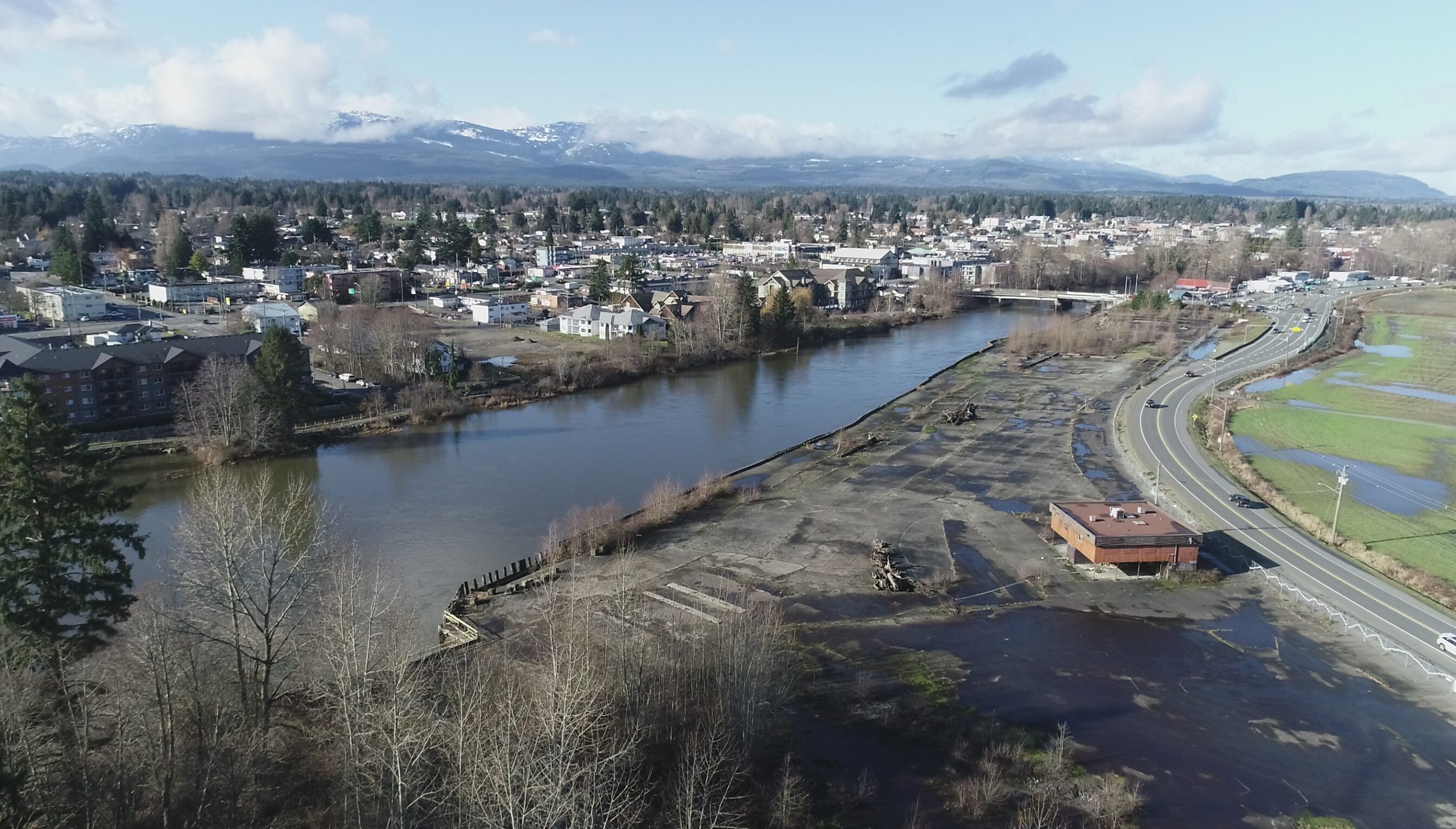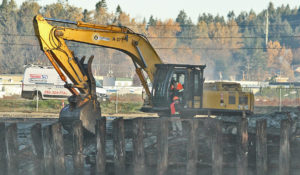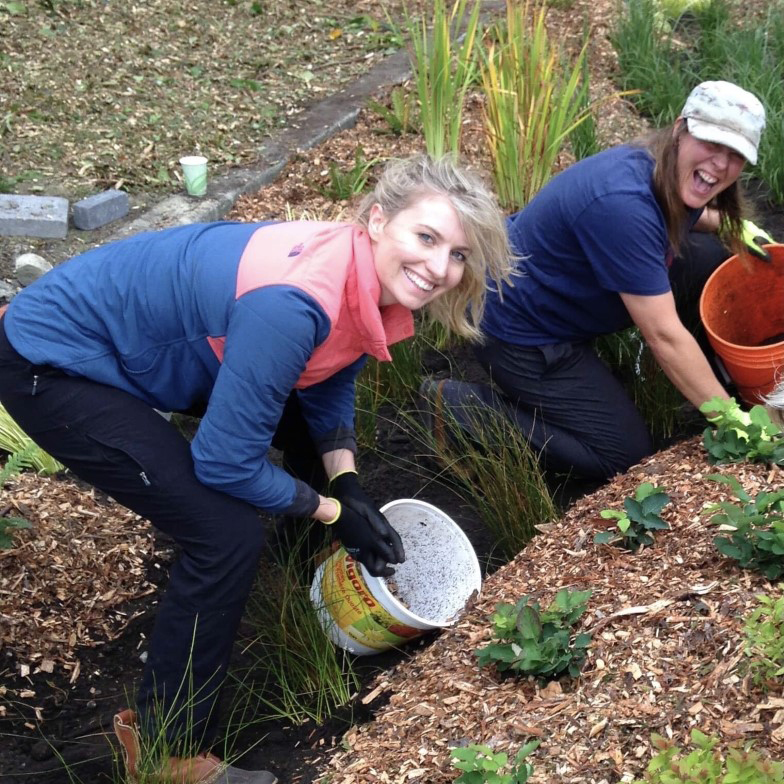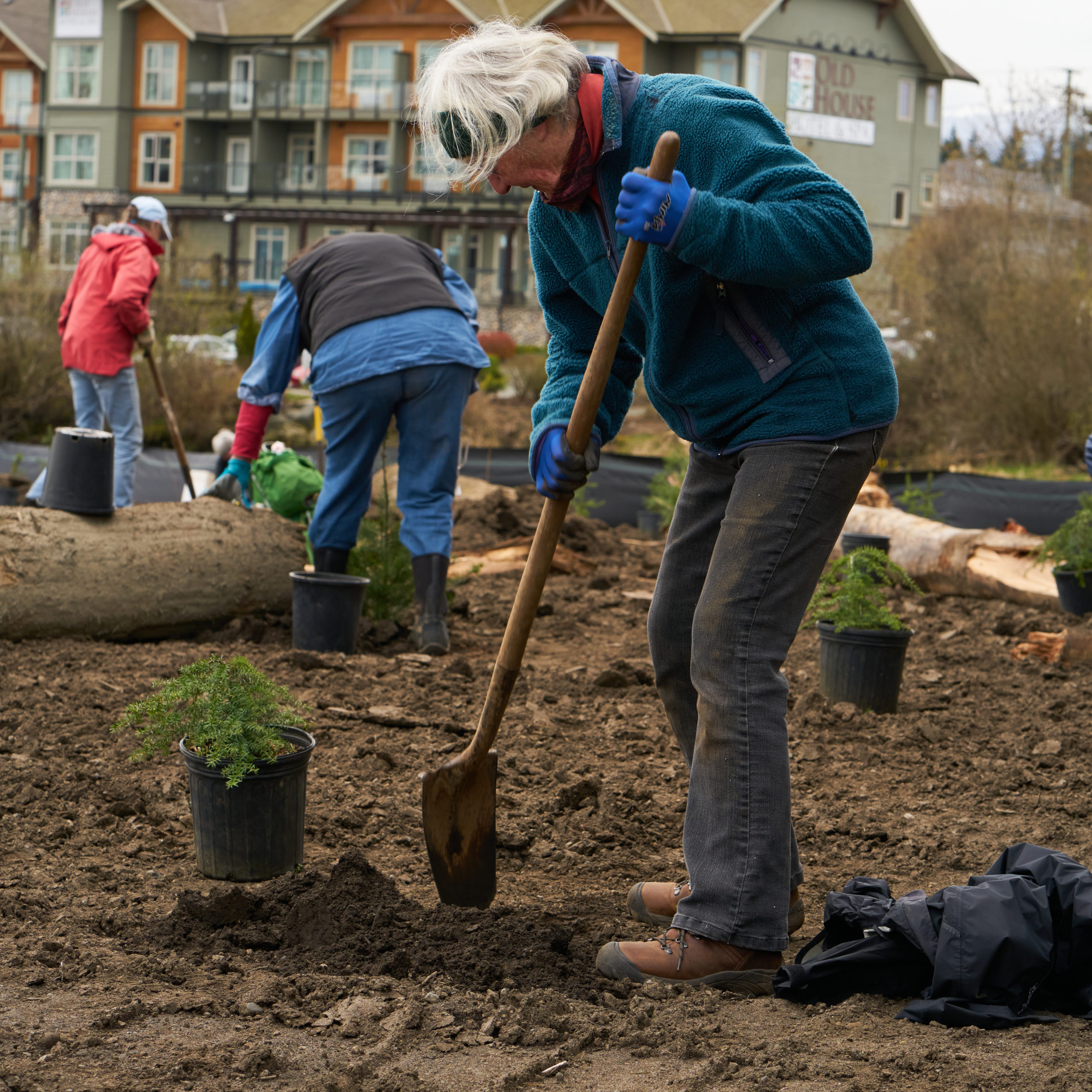Act Locally: How to De-Pave Your Property
Act Locally is a new blog series about how you can apply the nature-based climate solutions used by our Nature and Climate Grant Program participants to your own life.
Removing concrete can be hard work, literally and figuratively, but it pays off by both protecting nature and fighting climate change. Just ask the Comox Valley Project Watershed Society (CVPWS) who, alongside K’ómoks First Nation and the City of Courtenay, are working to “unpave paradise,” as they poetically put it.

Kus-kus-sum, a former sawmill site at the mouth of the Courtenay River on Vancouver Island’s east coast, was covered by concrete and asphalt, much of it bolstered with rebar and mesh wire.

So they’ve been removing acres of the stuff, recontouring the ground and planting native vegetation to restore crucial habitat while increasing climate resilience through better flood mitigation and carbon storage. (The project is one of six supported by WWF-Canada’s Nature and Climate Grant Program, presented in partnership with Aviva Canada.)
And you can, too! We talked to Caitlin Pierzchalski, an expert in ecological restoration and the Executive Director of the CVPWS, to find out why de-paving works and how to do it to your own piece of paradise.
Kus-kus-sum has been such a success so far! Can this approach also work at people’s homes, workplaces and communities?

Yes! De-paving all or part of any property allows for the rain that falls within the footprint of our property to move into the soil and migrate to local waterways and aquifers. Restoring natural pathways for water to move through our environments can greatly improve water quality, water quantity, and reduce “flashiness” — fast, unexpected flooding events — within our urban creeks and waterways.
Depending on the type of de-paving, you can also improve wildlife habitat and increase carbon sequestration on your property. You can gain a lot of ecological benefits, and much of the time you can gain aesthetic improvements as well.
Sounds great, but how would I start?
Think about what the site you are looking to de-pave will be used for. Is it your driveway, and will you continue to use it for that purpose? Is it a garden or food-growing area? That desired use will influence the approach.
To start, it is good to learn about your subsoil and the permeability of your landscape. If you have good permeability within your landscape, it gives more leniency as you begin to explore de-paving.
Look at how water accumulates and flows on your property. If you have an area that is contributing a lot of water to a local storm sewer, this might be a good site to explore. But it also means you’ll have to consider the impact of erosion and heavy rains on your post-paved space. It’s important to be cognizant of any underground infrastructure, like basements, and the slope of the property, so you aren’t encouraging water flow and infiltration near or into these spaces.
When it comes to actual removal of the hard stuff, what do people need to know?
There are many different strategies for de-paving, and the best approach will depend on your site. What issues are you looking to address with de-paving? How much water are you looking to defer from stormwater infrastructure? Are there any co-benefits — to water filtration, for example, or to wildlife habitats or air quality — that you’d like to integrate? What are the climatic patterns within your region? What is your subsoil, and what are your infiltration rates? All of these will help guide you into finding the best approach for your site.

What should I replace the concrete or asphalt with?
It really depends on your site, what your goals are, and what aesthetic you’d like to achieve. Sand and gravel are great for increasing infiltration of water and keeping the site easy to access or drive over. Plants can help manage water, improve heat islands, increase water filtration and improve biodiversity and habitat value. They can also potentially sequester carbon. You can also look into using the area for food production and increasing your usable garden space.
Is it worth de-paving even a very small space?
I believe that it is. We need to move beyond the simplicity that concrete offers and imagine our spaces in terms of their diversity and ecological values or functions. If we see a great many people using or creating spaces without or with minimal paving, it creates space for us to collectively reimagine how we use and develop our landscapes. Even tiny spaces can defer water from storm sewers and have water quality improvements. Each space matters.
One thing I like to keep in mind for de-paving spaces is cost and effort. If you have a small space, and so does your neighbour, maybe you can de-pave and mobilize the machinery to do it in one go? This will reduce the overall cost and effort, and help make these small changes more sustainable. Or maybe in some cases, it’s more practical to do this by hand, with the help of some friends and family. If that’s the case, starting small will help you trial out methods and achieve your goals more easily than if you take on a big space right away.
Why is this work so important to you?
These small acts show that you are actively integrating both the protection of biodiversity and the mitigation of the effects of climate change into the way you engage with the world around you. Centering these things, and taking steps towards them, can result in huge improvements.
We can’t change everything at once, but we can start making steps with our day-to-day choices and within our personal landscapes. Over time, these can make a big difference.
Learn more about nature-based climate solutions at Kus-kus-sum by watching the video below:
Read More: Nature and Climate Grant Program
Sowing change: How Canadian farmers are addressing the biodiversity and climate crises
Q&A: How agriculture can drive restoration
Act Locally: How to make your yard more nature-friendly with native shrubs
Restoring Utopia: How one group’s watershed work helps wildlife and hinders climate change
Meet 6 groups restoring biodiversity (and storing carbon) across the country

